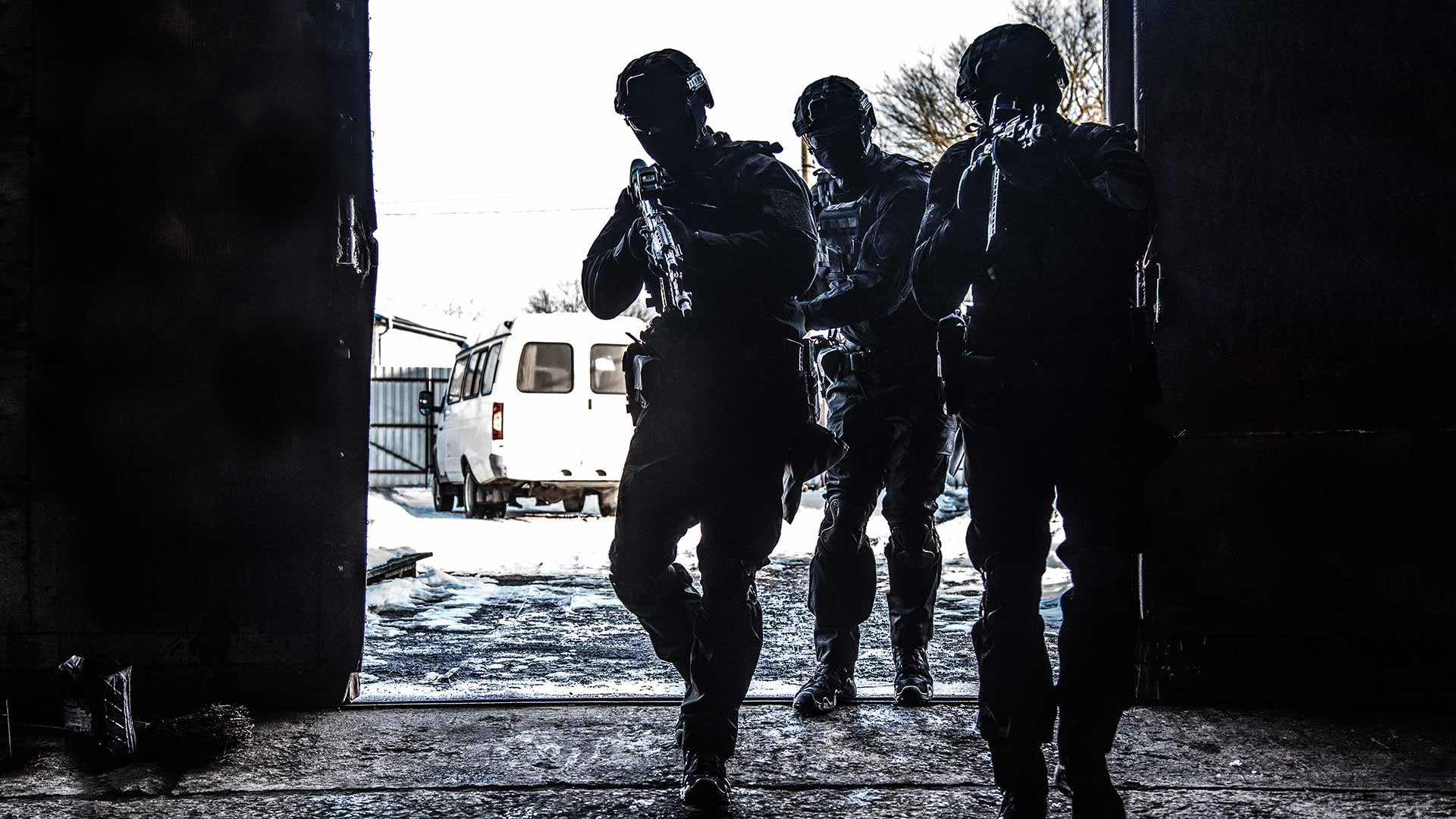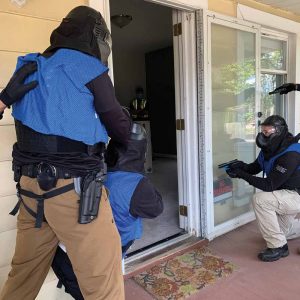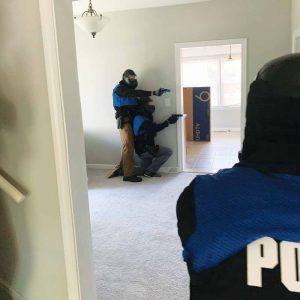
There are many groups in law enforcement that are periodically required to approach, enter and search a structure, whether it be a residence, business or otherwise. These groups include patrol, SWAT, narcotics and detectives, just to name a few. According to the FBI LEOKA 2019 Report, law enforcement lost 24 officers from 2015 to 2019 in tactical situations, including attempting to serve warrants, apprehending barricaded gunmen and other scenarios that require officers to enter and search structures. Armed with that information, law enforcement has to pause and ask: As a profession that stresses officer safety, how are we doing? Law enforcement may not be able to avoid violent offenders willing to engage in lethal confrontations, but we can reassess the manner in which we approach, enter and search structures.
One tactic or technique does not work for every situation. Starting with one course of action does not require continuing on that course when the situation dictates that the application of another tactic or technique would produce improved results. By blending dynamic tactics with deliberate tactics, officers will still be able to move fluidly through the structure with a better ability to process and assess information as they flow through.
Dynamic tactics
Dynamic entries, speed, surprise, violence of action, shock and awe, and initiative-based tactics are used to describe this type of entry and subsequent structure search. Hostage rescue, active shooter and dynamic entries/clearings should be reserved for those incidents that indicate imminent loss of life or serious bodily injury. The two dominant reasons behind this statement are related to officer safety and legal justification.
From an officer safety perspective, once officers breach an entry point and dynamically enter into the unknown, unnecessarily, they subject themselves to ambush. Also, as officers rush through the structure, it is difficult to process information effectively and have enough reaction time to provide an opportunity to perceive, analyze, formulate a strategy and react. From a legal perspective, courts are scrutinizing shock-and-awe tactics as excessive force when executing search warrants where there is no justification for such action.
This isn’t to say that dynamic tactics are to be abandoned altogether. There are certainly circumstances that occur during the clearing process that leave officers vulnerable to attack, and officers must move quickly (dynamically) through those areas to minimize their exposure. Hallways, stairwells and open areas devoid of cover or concealment are just a few examples. However, once officers have vacated the hazard and entered a less vulnerable position, they should then transition to a slower and more deliberate form of clearing.

be minimized by a brief delay to observe and orientate to locate threat
points and possibly even suspects.Tactical Encounters
Deliberate tactics
Deliberate entries, announced, delayed entry, observe/orientate/decide/act (OODA), limited penetration and a coordinated assault describe those tactics used to conduct slow and deliberate building searches. Anytime officers have control of an area, whether that is at the point of entry or the initial room or area (foothold), or the space they occupy is devoid of an immediate threat, they should transition to deliberate thought and action.
Upon entering a room/area, don’t continue to run the walls; officers cannot search and maintain security as a single element. Execute a limited penetration into the area, observe, orientate and decide who will move and who should hold, and then initiate the action as a unified force rather than a group of individuals acting independently. Conduct a search utilizing pairs of officers moving together, one performing the search and the other protecting the searching officer’s flank as they move through the area (cover/search teams). Start where the threat is the closest (danger close) and work your way through the area or room, utilizing the perimeter. Deal with one problem at a time when possible (divide and conquer). Once officers have secured the area they occupy, make a quick assessment to determine where they will clear next, based on the next closest threat. It may require you to move dynamically through a danger zone, only then to transition to a deliberate clearing once you arrive.
Training
For argument’s sake, let’s speculate and say that 3% to 5% of society, for one reason or another, feel that they have nothing to lose and will engage the police in a lethal confrontation. Many current procedures will safeguard law enforcement from the 95% of the population more interested in avoidance rather than engagement. However, officers must train and use tactics that will address the less than 5% who are willing to murder a police officer, and in doing so increase their chances of survival. There is not a single tactic that will guarantee survival each and every time. We cannot eliminate casualties, but through situational awareness, proper tactics and training, officers can make rapid and proper assessments and adapt their tactics accordingly, thereby mitigating the number of casualties they may experience.
In regard to training, all too often officers conduct building search training in sterile environments. That is to say, the rooms they are clearing are often devoid of furniture or obstacles. This standard is not consistent with what is experienced in real-world encounters. Homes and businesses are not empty containers, but rather contain many objects that create dead space and angles. It is from these angles that officers are exposed to hostile fire that cannot be covered by supporting officers. As officers separate from one another to search their areas of responsibility and continue to move deeper into a space, they are subjected to angles from multiple directions within that space, which are created by those obstacles. In order to assess the validity of your tactics, you must create training environments that resemble the ones you encounter.

The other issue with training is contentment. In the past, officers may have used certain tactics and been successful; however, success does not necessarily equate to validity. In reality, it may have simply been that there was no one at the location who was willing to shoot it out with the police. Fortunately for law enforcement, the majority of suspects that officers encounter are the escape-and-evade variety.
Of course, this may seem an oversimplification of a sometimes complex set of circumstances. Again, this is not a perfect world and each situation is unique to itself. In the end, you must apply the best course of action based on the totality of circumstances. The lesson to take away from all of this is to be flexible, remain fluid and not hold to a course of action that may not be prudent for the current situation. By fusing dynamic with deliberate, you will remain fluid throughout the clearing process and at the same time afford yourself the opportunity to maximize your resources while minimizing your risks.
“Water shapes its course according to the nature of the ground over which it flows; the soldier works out his victory in relation to the foe whom he is facing. Therefore, just as water retains no constant shape, so in warfare there are no constant conditions. He who can modify his tactics in relation to his opponent and thereby succeed in winning, may be called a heaven-born captain.” — Sun Tzu
As seen in the August 2021 issue of American Police Beat magazine.
Don’t miss out on another issue today! Click below:





